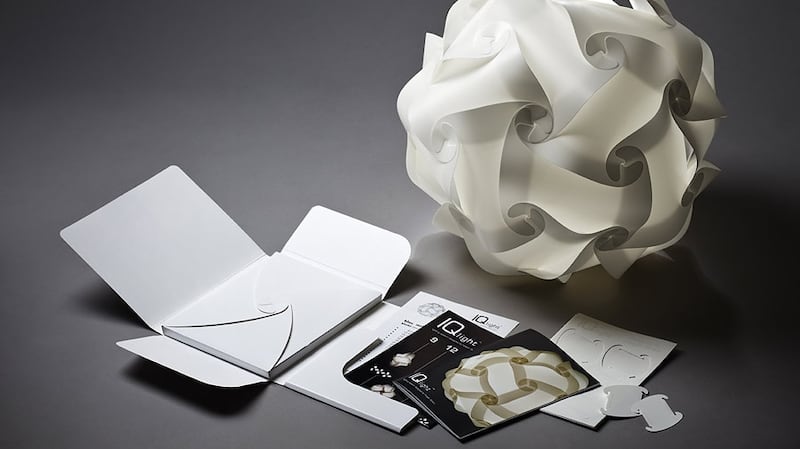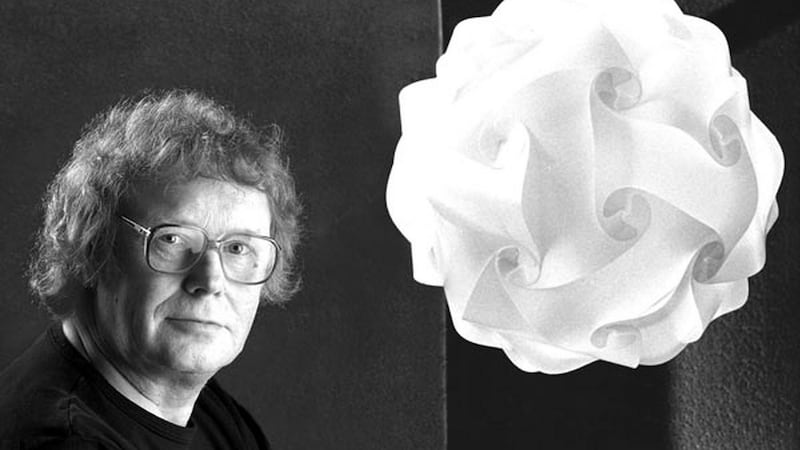A major part of the business undertaken by Kilkenny Design Workshops (KDW) in the 1970s and 1980s was packaging design and corporate livery. There were many European graphic and packaging designers in the group; one of whom was young Danish designer Holger Strøm.
KWD’s commercial products, including pottery, textiles and furniture, were on display in the showroom and in 1972 to make a festive showing for them for Christmas, Strøm was asked to design something seasonal.
It says a lot about the stripped down aesthetic and thought-through design of KWD that he didn’t get out the tinsel and red baubles but instead created a cylindrical and spherical lamp, multiples of which would be hung over the display and in such a way that they looked the same size. The shades, now called IQ, are still in production.

The name IQ light refers to the geometry underpinning the design: interlocking quadrilaterals.
Strøm says of the design: “I constructed them from triangular modules, which I glued together, and by using an equal number of modules for the sphere and the cylinder, they did actually appear to be the same size. It was just a Christmas decoration, but I couldn’t completely forget the idea.”

Once in production, the IQ was immediately popular – made by Kilkenny Illuminations Ltd, during the 1970s, it sold, according to Strøm, around 20,000 lights worldwide. The fact that it is modular – essentially flat-pack – for assembly later and made with pieces of light pliable plastic means shipping it is easy and inexpensive.
As a design it works in residential and commercial settings – and possibly even as a minimalist, if large, Christmas bauble.












